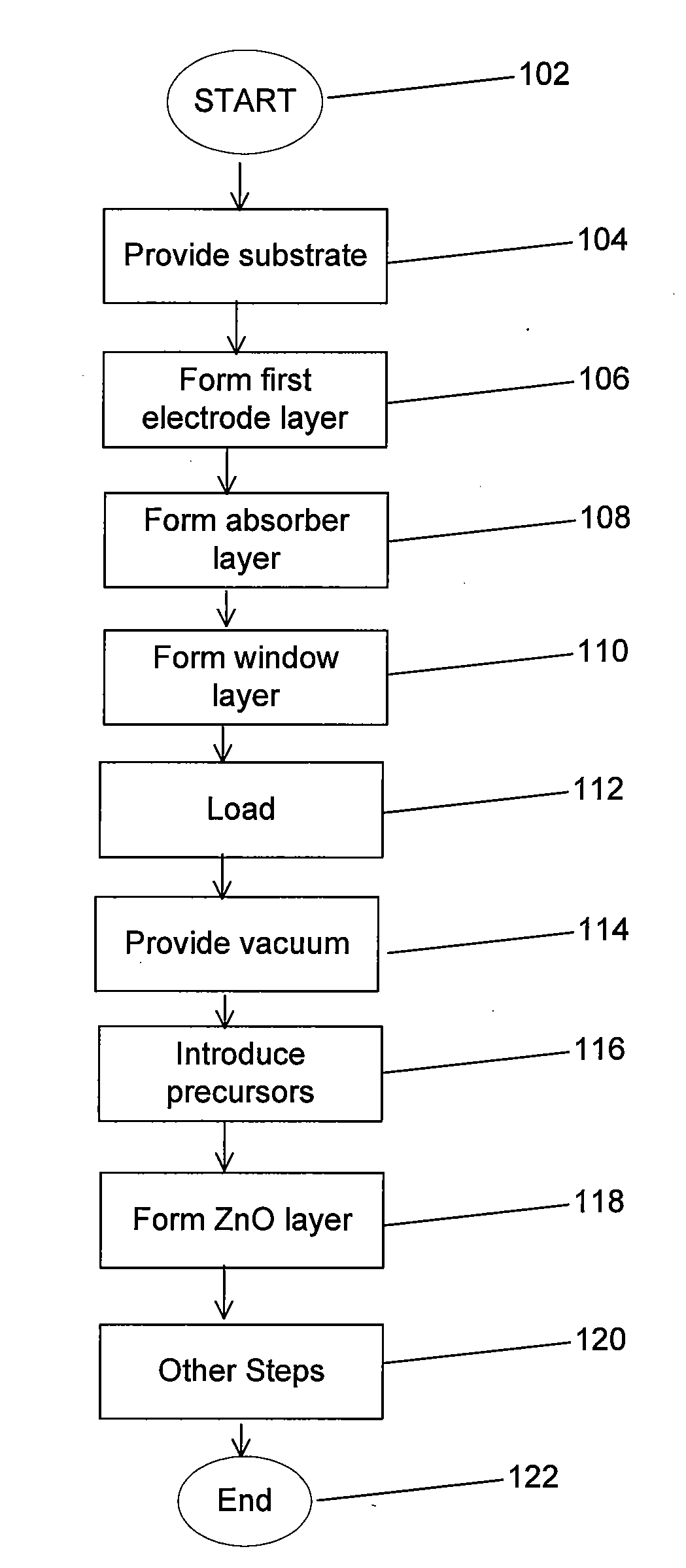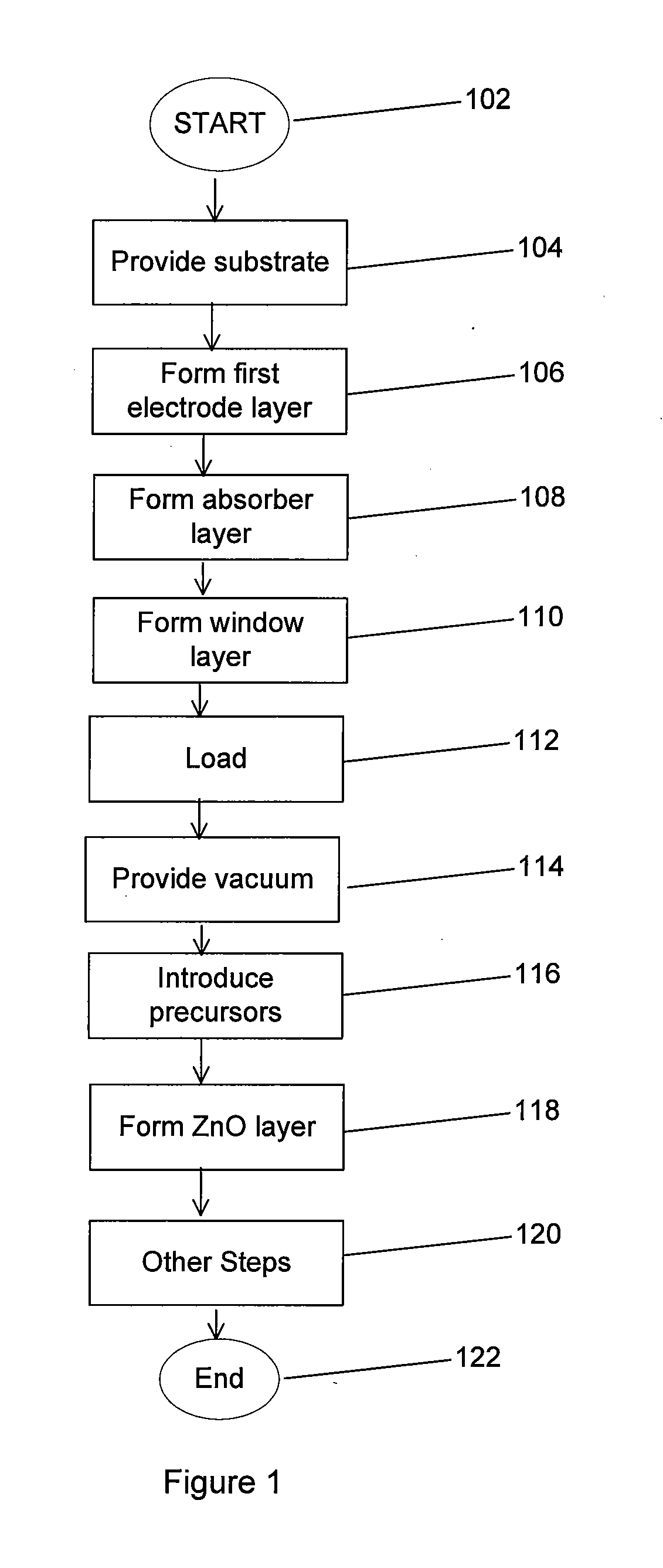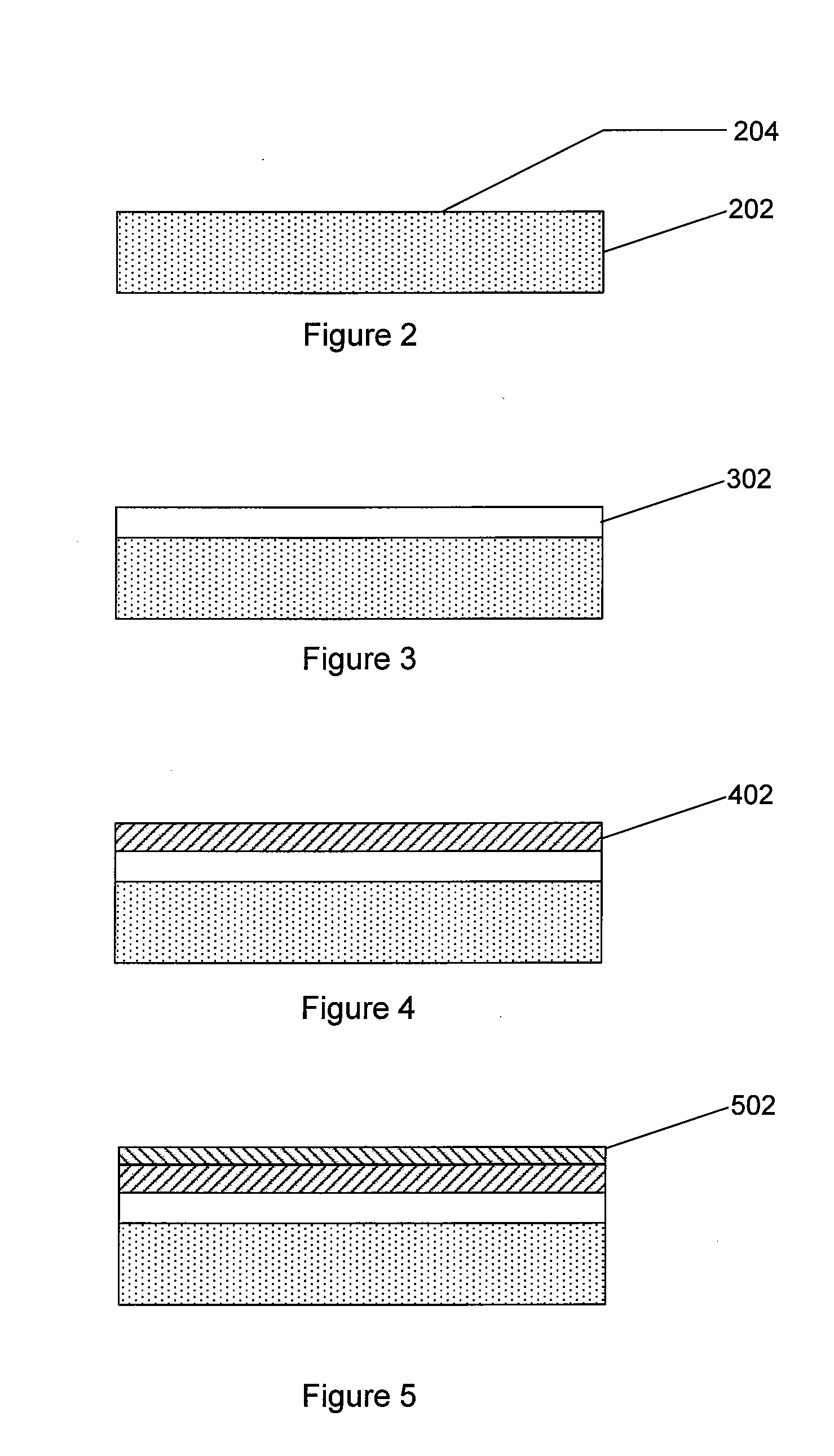Zinc oxide film method and structure for cigs cell
- Summary
- Abstract
- Description
- Claims
- Application Information
AI Technical Summary
Benefits of technology
Problems solved by technology
Method used
Image
Examples
Embodiment Construction
According to embodiments of the present invention, a method and a structure for forming a photovoltaic cell are provided. More particularly, embodiments according to the present invention provide a method and structure for forming a thin film photovoltaic cell. Merely by way of example, embodiments according to the present invention have been implemented using thin film semiconductor material. But it would be recognized that embodiments according to the present invention can have a much broader range of applicability.
FIG. 1 is a simplified process flow diagram illustrating a method of forming a photovoltaic cell according to an embodiment of the present invention. As shown, the method begins with a Start step (Step 102). A transparent substrate is provided. The transparent substrate can use a glass substrate such as soda lime glass in a specific embodiment. Other transparent substrate materials may also be used. These other transparent substrate material can include fused silica, qu...
PUM
| Property | Measurement | Unit |
|---|---|---|
| Temperature | aaaaa | aaaaa |
| Temperature | aaaaa | aaaaa |
| Temperature | aaaaa | aaaaa |
Abstract
Description
Claims
Application Information
 Login to View More
Login to View More - R&D
- Intellectual Property
- Life Sciences
- Materials
- Tech Scout
- Unparalleled Data Quality
- Higher Quality Content
- 60% Fewer Hallucinations
Browse by: Latest US Patents, China's latest patents, Technical Efficacy Thesaurus, Application Domain, Technology Topic, Popular Technical Reports.
© 2025 PatSnap. All rights reserved.Legal|Privacy policy|Modern Slavery Act Transparency Statement|Sitemap|About US| Contact US: help@patsnap.com



